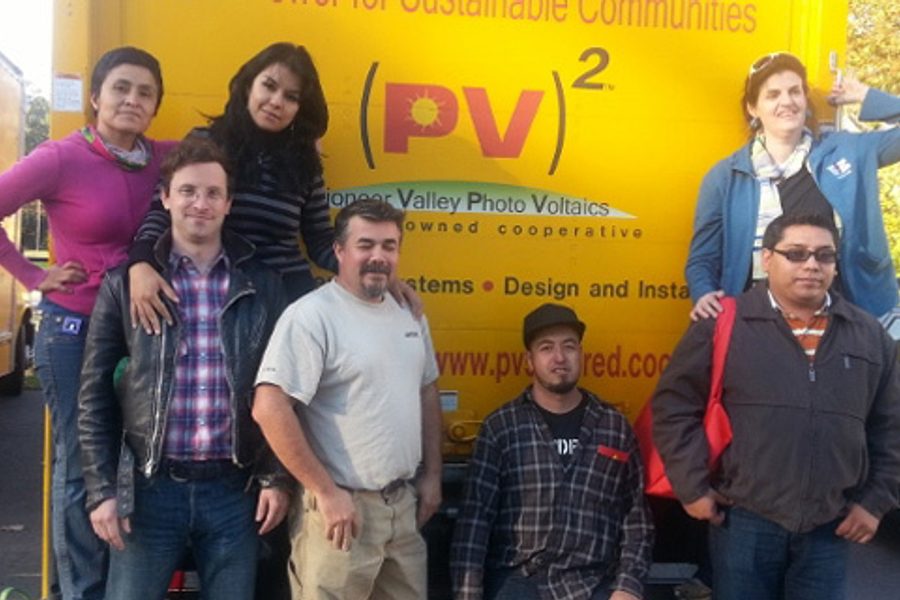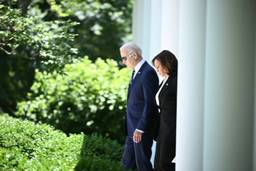
In 2011, Gabriela Manjarrez helped found a bicycle courier cooperative called BicienVía to deliver everything from letters to artisanal beer around Mexico City. Though she acknowledges that bringing co-ops together on a local level can be difficult, she says that the city’s alternative media have played an important role in uniting them. One collective of journalists in particular, La Coperacha, has “done a great job with getting the word out on the work of the different co-ops [in the area],” she says. “They have a radio program once a week and they interview different co-ops, and that’s the way we meet each other.”
But thanks to a lack of government support, co-ops in Mexico City may now be hurting for those resources. Until this summer, the municipal government provided La Coperacha physical space for their radio program, but officials in the city’s Coyoacán borough recently cut off support and forced them out, saying the journalists’ work “is not useful.” Manjarrez says that in response, Mexico City’s co-op community is now coming together to support La Coperacha and pressure borough officials to renew support for the program. “It’s very bad for us. To say cooperative work is not useful — that affects the whole community,” she says.
In recent years, the importance of advocating for worker cooperatives as an alternative to exploitative capitalism has risen to the forefront of organized labor initiatives both in Mexico and the United States. Since capitalism is now more global than ever before, they feel, attempts at reshaping it must be global as well. Building international worker solidarity is now not only about bringing traditional trade unions together, but also about uniting cooperatives from different countries.
To that end, a delegation of cooperatives affiliated with the Mexican labor federation Frente Auténtico del Trabajo, or Authentic Workers’ Front (FAT), traveled to New England last week to meet with members of co-ops associated with the United Electrical, Radio and Machine Workers of America (UE).
The 10-day tour — which started Sunday, Oct. 13 and will end on Tuesday — included visits to co-ops in Massachusetts and Vermont, as well as a stop on Friday in Fort Edward, N.Y. to participate in a UE protest of General Electric’s plan to close a capacitor plant and lay off nearly 200 union workers. The visit comes as both UE and FAT are thinking more seriously about the potential role of cooperatives in creating an equitable economy and staving off job loss.
Unions and co-ops both aim to transform the economy. While unions build collective power among workers and demand concessions from employers, co-ops are enterprises that aim to be more democratic and beneficial to society than traditional capitalist businesses. Worker cooperatives — where the workers are their own bosses — can eliminate the inherently exploitative relationship between employers and employees that unions typically mediate. But unlike co-ops, unions and federations like UE and FAT are uniquely suited to uniting workers from a variety of workplaces, building community and political alliances, and shaping class-consciousness.
FAT and UE, which entered into a strategic alliance in 1992 to oppose the controversial free-trade agreement NAFTA, both pride themselves on being independent, member-run, left-oriented labor organizations. FAT divides its activities into three sectors: trade unions, community organizations, and social economy, which represents co-ops. Enrique Lazcano, an elected representative of the social economy sector, says it once included as many as 30 cooperatives, but for a variety of reasons — including Mexico’s often hostile environment for independent worker activity — there are now only six.
“Our objective within FAT is to reinvigorate this sector [by] organizing and founding new co-ops,” Lazcano says in an interview with In These Times. These cooperatives include worker-owned businesses, consumer co-ops, and credit unions. Lazcano hopes to tie production, distribution, and consumer co-ops together, part of an “integral vision” for a “different economic circuit that can give autonomy to people.”
UE itself encompasses six co-ops, including Chicago’s New Era Windows Cooperative, a worker-run enterprise making energy-efficient windows that launched in May after employees famously occupied their closing factory in the winter of 2008. In New England, the tour will visit UE’s Collective Copies, a 30-year-old cooperative copy shop in Amherst and Florence, Mass.; UE Local 255 and Local 203, which represent workers at the food cooperatives Hunger Mountain Co-op in Montpelier, Vt. and City Market in Burlington, Vt., respectively; and Webskillet, an organization of web designers in Burlington, Vt. (also part of Local 203).
During UE and FAT’s 21-year partnership, UE has contributed money and media to FAT’s efforts to organize General Electric maquila workers in Ciudad Juárez and employees at the Echlin auto parts plant in Mexico City. FAT has reciprocated by supporting UE in organizing foundry workers in Milwaukee and public sector workers in North Carolina.
Additionally, the two labor organizations have done numerous worker-to-worker exchanges to share information and build relationships at the rank-and-file level. Last November, FAT hosted a delegation of UE co-op members in Mexico for the first exchange specifically around cooperatives. UE is returning the favor by hosting this week’s delegation.
“For us, it’s been fabulous because that trip to Mexico really energized people,” says Robin Alexander, UE’s International Affairs Director. “It started a discussion within the UE about how maybe we should have a co-op sector in the way the FAT does.” With that in mind, she says, delegates passed a resolution at UE’s national convention this August calling for the union to establish its own cooperatives division and to encourage the creation, unionization and coordination of more co-ops, both domestically and internationally.
FAT’s leaders hope the increased communication could be a way to strengthen workers’ bonds with other co-ops. “We would really like to see the cooperative movement better organized on an international level,” says Isaías García Izquierdo, an accountant with Unión de Cooperación Independiente “6 de Julio,” a 27-year-old credit union in Saltillo and FAT’s oldest co-op. “We also believe there can be mutual support between co-ops even if we’re in different countries. There should be solidarity across borders.”
The person-to-person interactions made possible by the FAT visit are helping promote some of this international cooperation. Alma Contreras Torres, a trained architect who works with a public sector union affiliated with FAT in the state of Nayarit, says she was inspired by a fruitful conversation about the possibilities of using alternative energy with members of PV Squared, a worker-owned co-op in Greenfield, Mass. that installs solar panels. Contreras Torres’s union is developing a consumer cooperative that will build ecologically friendly housing, which may incorporate solar energy, for its members.
But uniting co-ops, both internationally and within the labor organizations’ own countries, may not be as easy as a few trips over the border.
In addition to the kind of government interference that Manjarrez’s co-op faced in Mexico City, García Izquierdo says another obstacle to bringing co-ops together in Mexico is a 2000 law prohibiting credit unions from lending to worker cooperatives, something FAT is fighting to change. “If credit unions could actually finance production co-ops, we could encourage their growth,” he says. “This would be tremendous. We would be able to really be a single movement; we wouldn’t be isolated in different types of co-ops.”
Despite these setbacks, members of the delegation say that meeting other co-ops helps restore their faith in the potential of the cooperative movement. “There are a lot of co-ops that are just out to make money, but the co-ops that are participating in this delegation and the co-ops that we’ve met with [on the trip] are all places where people have an broader idea of social transformation,” says Lazcano.
Many workers in American co-ops agree. “In the United States, for the most part, the consumer co-ops have lost their soul and they’re very capitalist in the way they run their businesses,” says Elizabeth Jesdale, president of UE Local 255 at Hunger Mountain Co-op. She explains that she and her coworkers unionized a decade ago after management attempted to make them all part-time employees and take away their benefits. “We find ourselves at odds between the workers and management, and I think it’s really unfortunate. A trip like this, and going to see what the FAT is doing down in Mexico, helps remind me of why the co-op is there.”
“We want to build something, they want to build something also,” Lazcano says of FAT and UE’s efforts around co-ops. “So let’s see what we can build, us with them, them with us, all of us together.”
Jeff Schuhrke is a labor historian and assistant professor at the Harry Van Arsdale Jr. School of Labor Studies, SUNY Empire State University. He is the author of Blue-Collar Empire: The Untold Story of US Labor’s Global Anticommunist Crusade.







